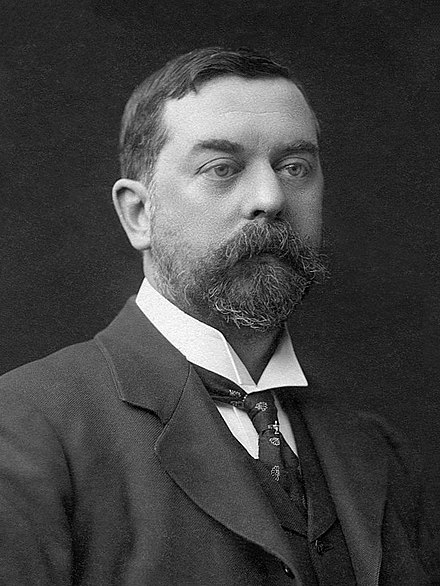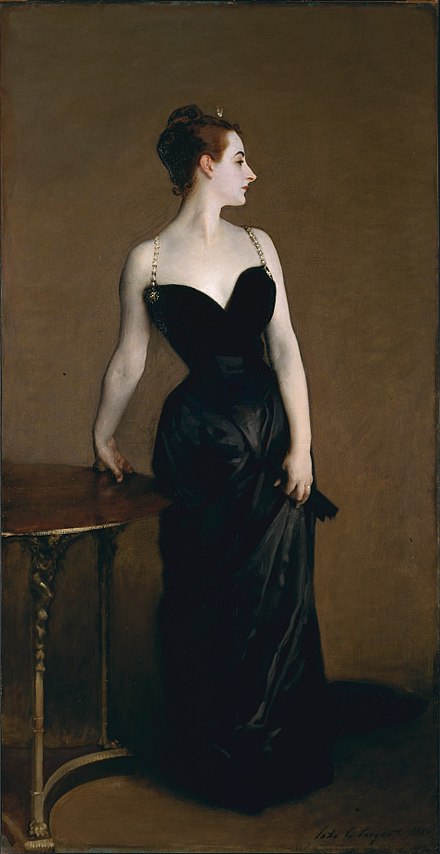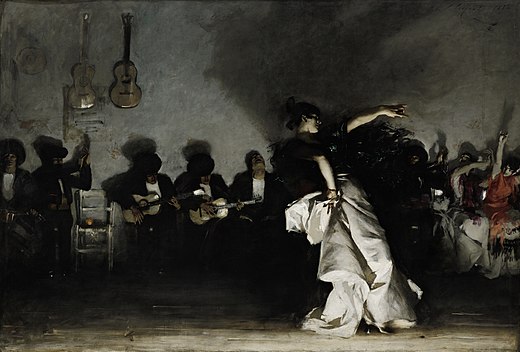John Singer Sargent (1856–1925) was an American artist renowned for his portraits, which capture the essence of his subjects with remarkable clarity and insight. Born to American expatriates in Florence, Italy, Sargent became one of the most sought-after portrait painters of his era, known for his technical mastery, innovative compositions, and ability to render light and texture with exceptional skill.

Early Life and Education
Sargent was born in Florence to well-to-do American parents who traveled extensively across Europe. His upbringing in the cultural centers of Europe profoundly influenced his artistic development.
- Early Training: Sargent received his initial art education from his mother, an amateur artist, before studying at the prestigious École des Beaux-Arts in Paris under the tutelage of Carolus-Duran, a leading portraitist of the time.
- Influence of Carolus-Duran: Carolus-Duran’s emphasis on alla prima paintingPainting is a fundamental form of visual art that has been practiced for thousands of years. It involves applying pigment to a surface such as canvas, paper, or a wall. Painting can be explored through various styles, techniques, and mediums, each offering unique possibilities for expression and creativity. Historical Background • Ancient Beginnings: The history of painting dates back to More (wet-on-wet technique) and the use of a limited palette had a significant impact on Sargent’s style.
Rise to Fame
Sargent’s early works demonstrated his extraordinary talent and quickly garnered attention in the art world.
- First Major Success: Sargent’s paintingPainting is a fundamental form of visual art that has been practiced for thousands of years. It involves applying pigment to a surface such as canvas, paper, or a wall. Painting can be explored through various styles, techniques, and mediums, each offering unique possibilities for expression and creativity. Historical Background • Ancient Beginnings: The history of painting dates back to More “Portrait of Madame X” (1884) caused a scandal at the Paris Salon due to its provocative pose and the subject’s daring dress, but it also established him as a leading portraitist.
- Transatlantic Acclaim: After moving to London in the mid-1880s, Sargent continued to gain acclaim. His work was celebrated on both sides of the Atlantic, securing commissions from wealthy patrons and prominent figures in society.

Notable Works and Themes
Sargent’s oeuvre includes a wide range of subjects, from society portraits to landscapes and genre scenes.
- Portraits: Sargent’s portraits are known for their psychological depth and lifelike quality. “The Daughters of Edward Darley Boit” (1882) and “Lady Agnew of Lochnaw” (1892) are among his most famous works, showcasing his ability to capture the personality and presence of his subjects.

- Landscape and Genre Scenes: Although best known for his portraits, Sargent also painted landscapes and genre scenes. His watercolorsWatercolors are a unique and expressive medium, beloved for their translucency and fluidity. This type of paint is water-based, allowing artists to create delicate washes, vibrant hues, and details with ease. Historical Background • Ancient Origins: Watercolor painting dates back to ancient civilizations, including Egypt and China, where it was used for manuscript illumination and decorative arts. • Renaissance Revival: More, such as “Simplon Pass: The Lesson” (1911), demonstrate his versatility and skill in capturing natural light and atmospheric effects.

- Murals: Later in his career, Sargent undertook several large-scale mural projects, including the decoration of the Boston Public Library, which displayed his mastery in a different medium.
Innovative Techniques
Sargent’s innovative techniques and approaches set him apart from his contemporaries.
- Alla Prima Technique: Sargent often employed the alla prima technique, paintingPainting is a fundamental form of visual art that has been practiced for thousands of years. It involves applying pigment to a surface such as canvas, paper, or a wall. Painting can be explored through various styles, techniques, and mediums, each offering unique possibilities for expression and creativity. Historical Background • Ancient Beginnings: The history of painting dates back to More directly onto the canvas without preliminary sketches. This method allowed him to capture the spontaneity and immediacy of his subjects.
- Mastery of Light and Texture: Sargent’s ability to render light and texture with precision and nuance is one of his most celebrated skills. His brushworkMasterful brushwork is often the defining feature of great artists, where the brush becomes an extension of their arm, allowing paint to flow effortlessly onto the canvas. These artists demonstrate a profound understanding of their medium, knowing precisely when to apply thick, textured strokes or smooth, delicate ones. Their skill extends beyond mere color application; it's about the artistry of More captures the subtle play of light on skin, fabric, and other surfaces, creating a sense of realismRealism is an art movement that emerged in the mid-19th century, emphasizing the depiction of subjects as they appear in everyday life. It rejects the idealized forms and dramatic expressions of Romanticism, focusing instead on accuracy, truthfulness, and the mundane aspects of the human experience. Realism strives to capture the world in a straightforward and unembellished manner. Gustave Courbet, The More and vitality.

Challenges and Controversies
Sargent’s career was not without challenges and controversies, particularly related to his unconventional style and subject matter.
- Madame X Scandal: The controversy surrounding “Portrait of Madame X” initially damaged Sargent’s reputation in Paris, leading him to move to London to rebuild his career.
- Critical Reception: While many critics praised Sargent’s technical prowess, some criticized his work as superficial and overly focused on the superficialities of high society.

Later Life and Legacy
In his later years, Sargent focused more on landscapes, genre scenes, and public murals, moving away from portrait commissions.
- Shift to WatercolorsWatercolors are a unique and expressive medium, beloved for their translucency and fluidity. This type of paint is water-based, allowing artists to create delicate washes, vibrant hues, and details with ease. Historical Background • Ancient Origins: Watercolor painting dates back to ancient civilizations, including Egypt and China, where it was used for manuscript illumination and decorative arts. • Renaissance Revival: More: Sargent’s later work includes a significant body of watercolorsWatercolors are a unique and expressive medium, beloved for their translucency and fluidity. This type of paint is water-based, allowing artists to create delicate washes, vibrant hues, and details with ease. Historical Background • Ancient Origins: Watercolor painting dates back to ancient civilizations, including Egypt and China, where it was used for manuscript illumination and decorative arts. • Renaissance Revival: More, which showcase his continued experimentation with light, color, and form.
- Public Murals: His murals in the Boston Public Library and the Museum of Fine Arts, Boston, highlight his ability to work on a grand scale and his commitment to public art.
Enduring Influence
John Singer Sargent’s legacy endures through his extraordinary body of work and his influence on subsequent generations of artists.
- Influence on Contemporary Art: Sargent’s techniques and approach to portraiture continue to inspire contemporary artists, and his works are studied for their brilliance in capturing human expression and texture.
- Major Collections: Sargent’s paintings are held in major collections worldwide, including the Metropolitan Museum of Art in New York, the Tate Britain in London, and the Museum of Fine Arts in Boston.

Cultural Impact
Sargent’s impact extends beyond the art world, influencing fashion, photography, and popular culture.
- Fashion and Photography: Sargent’s detailed and stylish portraits have influenced fashion photography and contemporary portraiture, emphasizing the importance of light, pose, and expression.
- Popular Culture: Sargent’s works have been referenced and celebrated in films, literature, and exhibitions, underscoring his status as a cultural icon.
Conclusion
John Singer Sargent’s mastery of portraiture, innovative techniques, and ability to capture the essence of his subjects have cemented his place as one of the greatest artists of his time. His work continues to captivate and inspire, offering a timeless exploration of human expression, light, and texture. Sargent’s enduring legacy is a testament to his extraordinary talent and his profound impact on the world of art.
